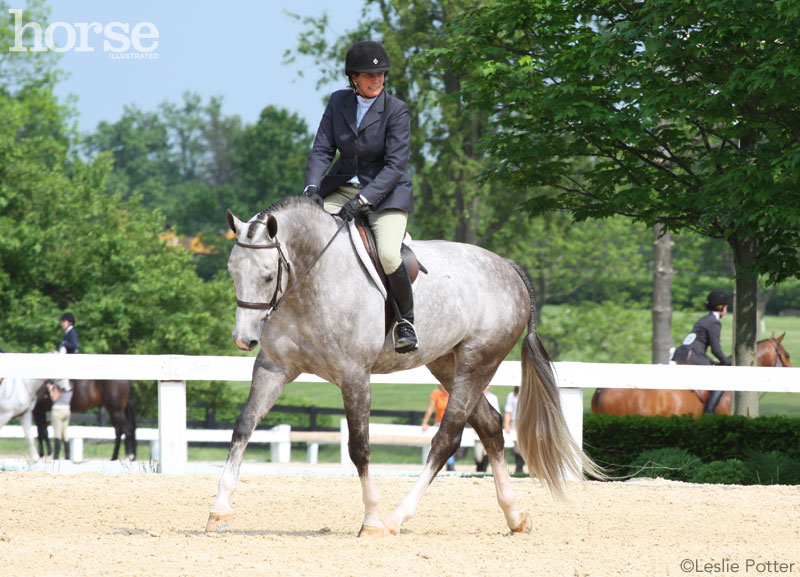
Love them or hate them, flat classes are part of every hunter rider’s world. Bad transitions, blown leads and the dreaded spook in the corner are common mistakes committed in the ring. Fortunately, there are things you can you do at home to fix these situations.
Becky Sanoja is a British Horse Society (BHS)- and United States Hunter Jumper Association (USHJA)-certified instructor and the owner of Bryherstone Farm in Wiley, Texas. She has been training horses and riders for over 40 years, from green to the Grand Prix ring.
Here, she shares some simple tips that can help move you and your horse up into the ribbons.
FIX NO. 1: Downward Transitions
You know that at some point in the class, there will be a downward transition. Whether you have a hot horse or a lazy one, this transition is important, yet often overlooked in schooling.
During a downward transition, the horse should remain in front of your leg, and your hands should still have a connection with the horse’s mouth. You want your horse to downshift smoothly and easily.
However, many riders fail to achieve these seamless transitions. Instead, the horse loses his frame: he might run through the rider’s hands, stiffen at the neck and poll, or become uptight. Sanoja explains that these errors can occur for a variety of reasons. Perhaps the horse is young or isn’t comfortable with all of the other horses in the arena. Her solution? Plenty of flatwork at home. Every productive ride helps improve communication between you and your horse.
Many riders tend to focus on upward transitions when working on the flat: picking up the correct lead or moving from a halt into a forward trot. Don’t forget to work on downward transitions, too.
Practice transitions from walk to halt and trot to halt. Focus on being balanced and supple as a rider. If you’re not balanced, your hands will bounce, your legs won’t be steady and you’ll get bad transitions.
“Work without stirrups and in two-point,” suggests Sanoja. “Both exercises will force you to balance.”
If you have a hot or nervous horse, don’t get frustrated if he initially resists downward transitions. Instead, work on getting your horse to relax. “I like to do walking sessions in between cantering and trotting with horses that are wound up,” says Sanoja. “Also, ride with other horses in the ring so he gets used to the busyness of the ring.”
Schooling upward transitions can also positively benefit your downward transitions. When working on upward transitions at home, especially with lazy horses, Sanoja prefers to ride with a long dressage whip. “With a dressage whip, you don’t have to take your hand away from the reins and lose contact,” she explains.
As you apply your leg, if your horse doesn’t respond immediately, tap him behind your leg with the dressage whip. “If he moves forward, reward with a stroke on the neck and immediately take the pressure off,” she says.
FIX NO. 2: Falling in on the Corner
The corners in a show-ring are notoriously spooky to horses, but they still need to stay well-rounded, collected and properly bent through them.
In many flat classes, Sanoja witnesses horses not bending uniformly through their bodies, which makes them shorten their stride and lose rhythm.
Her schooling solution: Ride around the arena and make a circle in each corner. Focus on making it round. If the horse is falling in, use inside leg and outside hand; it’s important that the horse is bent around your inside leg.
If your horse is still falling in on his shoulder, open your outside rein and use indirect inside rein. “Don’t pull the inside rein across the withers, however,” she cautions. “Using too much inside hand will cause the horse to fall out with the outside shoulder. Just the right combination of the aids must be fine-tuned to produce the correct bend.”
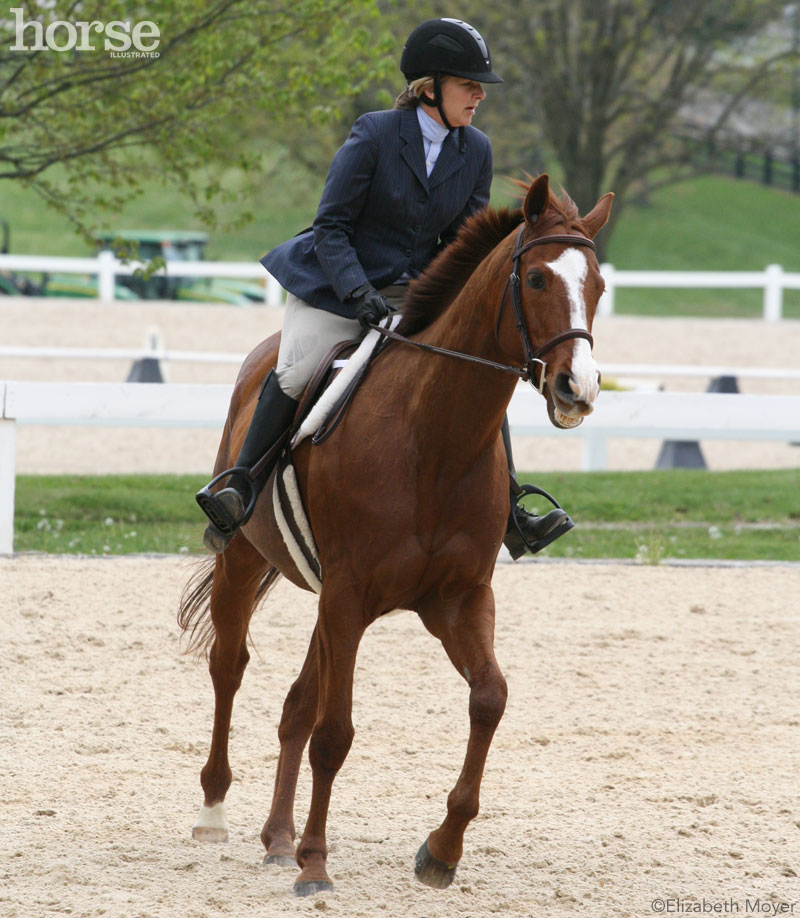
FIX NO. 3: Picking up the Wrong Lead
Often a horse picks up the wrong lead in a flat class because the rider is nervous, or perhaps the horse anticipates the cue and bolts off on the wrong lead. Whatever the reason, no rider wants to blow the lead in the flat class. It’s almost certain you won’t place.
Sanoja advises her riders to work on the canter departure at home. If your horse is young, focus on bending him to the outside and distributing his weight to the inside shoulder to achieve the canter depart. To do this, sit the trot with a tall upper body and use your outside hand, outside leg, and a slight opening rein.
The canter depart for the more advanced rider and horse should involve a slight bend to the inside. Use inside leg at the girth, supporting with a passive outside leg behind the girth. Have slight indirect rein with support of the outside hand.
Use leg and hand together to balance the horse for the transition. The horse’s weight needs to be distributed more to his hindquarters to enable him to engage himself for the canter depart. If you’re just using your legs but have no contact with the horse’s mouth, then the horse is just going to trot faster. “It’s as if you have the air conditioning on and the door open,” Sanoja explains. “You have to contain the energy,”
Be creative with how you ask for the canter departure. Ask anywhere in the arena: in serpentines, figure 8s, down the centerline or even in the middle of the arena. “You want your horse listening to you, and you need to be consistent with how you ask. Focus on relaxing yourself, which will help with your horse’s anticipation.”
FIX NO. 4: Stop the Spooking
Whether it’s a plastic bag flying in the wind or a sudden barking dog, everyone has felt an unexpected spook from their horse. Sanoja often attributes spookiness to horses at shows to the horses being too fresh. Rather than longeing a fresh horse at a show, she prefers to ride him. Longeing at a show risks the horse getting injured and is hard on the hocks. If you must longe, find good footing and make sure the horse has boots on and is cantering properly and not cross-cantering.
Most importantly, Sanoja reminds riders to not make a big deal out of spooky elements of a ring.
“Horses will be nervous if you are,” she says. “Train yourself to relax.” Alternatively, Sanoja suggests making a spooky corner at home to get your horse used to seeing new things.
No Quick Fix
All of these exercises are simple, but you need to school them consistently in order to improve flat class issues at home.
Transitions and bending require horses to use specific muscles, and you need to make sure your horse has worked those muscle groups so he’s ready to go around the hunter ring in a beautiful, collected frame. If you’ve done your homework, he’ll be ready to strut his stuff at the walk, trot and canter, and have a flawless performance in front of the judge.
ALLISON GRIEST is a freelance writer based in Texas. Follow her on Twitter: @allisongriest.
This article originally appeared in the June 2015 issue of Horse Illustrated magazine. Click here to subscribe!

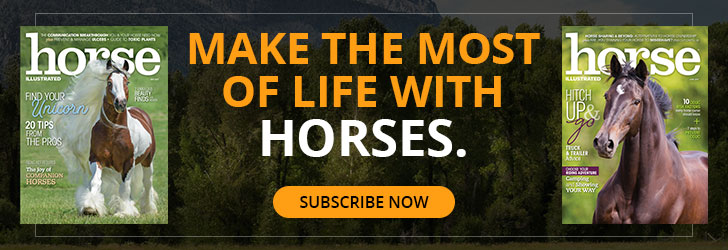
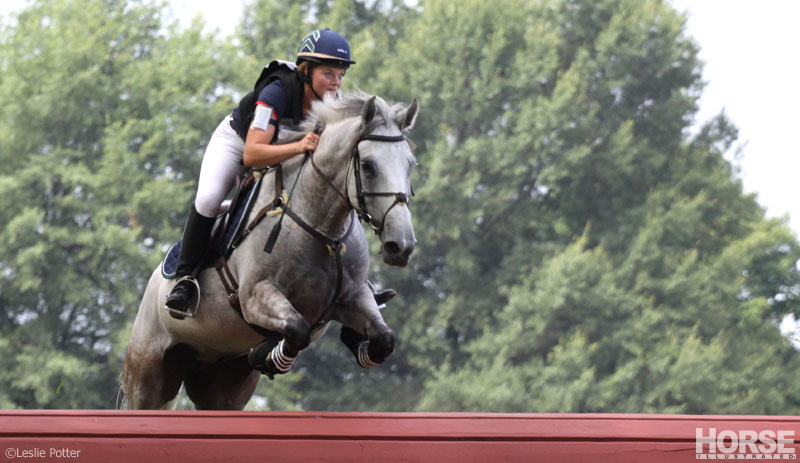
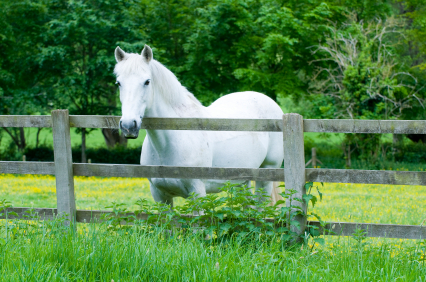

Feedback from the judge would be nice, instead of just impersonal rankings.